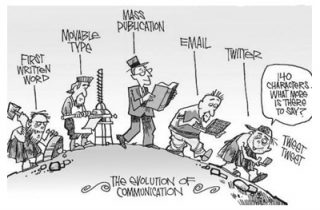The language of leaders is simple, direct, investable and shareable. As a leader, your first goal is to connect with your audience, earn their trust and get them to endorse and share your vision. So how do you create that connection with your most important stakeholders?
- Practise, practise, practise – Winging it is not an option. The best leadership stories are planned, practised and delivered with great frequency.
- Get personal – The day of generic talking points is long gone, and social media has dramatically altered the communications playing field. Audiences who know the intimate details of their friends’ lives on social media will expect to get to know you personally, so include personal anecdotes and experiences that illuminate your perspective.
- Find your niche – Who do you want to be? Are you the traditionalist, the trailblazer, the educator or the iconoclast? Have a clear understanding of your role and how it informs and enhances your story.
- Take a stand – Neutrality is not a path to inspiration. Those seen as leaders articulate a clear and compelling vision — and they aren’t afraid to rattle cages. The biggest, boldest vision is the one that gets noticed and attracts followers.
- Go public – There’s no hiding in the corner office. Leaders must be willing to be visible and put themselves out there to communicate their point of view. If you don’t like exposure, you might want to rethink your leadership aspirations.
- Tell stories – Forget about data. New studies show audiences connect with and retain emotional stories far more than facts and figures. So ditch the balance sheet in favour of a story that creates a common bond with your audience and connects to employees’ deeply held personal motivations and aspirations.
- Get charming – Perhaps the greatest tool to persuade an audience is that set of pearly white teeth your dentist worked so hard to perfect. And it’s often the tool least utilised in leadership communications. Smile, and smile often. It’s the quickest and easiest way to bond with your audience.
- Influence your audience – Psychologist Robert Cialdini has developed a number of principles of influence that can be used to persuade an audience. His principle of authority says we are inclined to support someone if we think the person is a credible expert, so establish your credentials in all of your leadership communication. Cialdini’s principle of likeability says we can be persuaded if we regard the speaker as a trusted friend. Referencing examples and anecdotes from your personal life help the audience identify with you as a speaker and see that you’re a human being with a family and life outside of the office, just like them.
- Acknowledge issues – Leaders are transparent about problems but offer clear and actionable steps to resolution.
- Show you care – Every audience and every individual who has ever looked to a leader for guidance wants to know what’s in it for them. Recognise the great work of individuals, and use examples and anecdotes that show you have a keen understanding of their contributions and aspirations.
Thanks to Tom Barritt from Ketchum Perspectives for this post’s inspiration.
